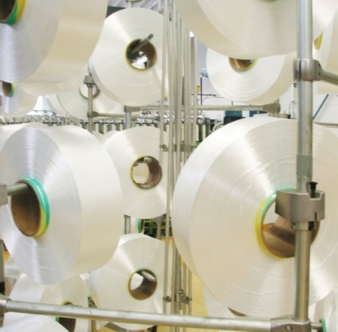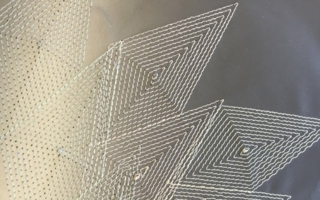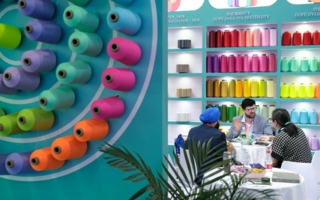25/05/2021 – Smart textiles — auf Deutsch lesen
Traugott Baumann: Conductive into the future
The filament twisting company Traugott Baumann KG in Winterlingen in the Swabian Alb has taken up the challenge of conductive yarns.
A wide range is required, from highly conductive to weakly conductive, through high-strength to flame-retardant. Of course, the yarns should also be suitable for use on weaving or knitting machines, on sewing or embroidery machines. This poses many challenges. Due to its many years of experience with conventional sewing and knitting yarns as well as technical yarns, the filament twisting mill Traugott Baumann KG in Winterlingen in Germany has faced these challenges.
Our environment is becoming more and more digital, intelligent and networked.
From smart homes to smart clothes to Industry 4.0.
The conventional process using rigid circuit boards, sensors and cables is no longer suitable for many things.
Conductive yarns are required so that applications in T-shirts, gloves or particularly small sensors can be implemented.
Depending on the application, these must meet very different requirements.
With extensive tests, a conductive component was built into existing and proven thread constructions. Some time ago, a polyester-steel thread was brought onto the market that is suitable for many applications. This thread is particularly characterized by a clearly defined conductivity. This is an indispensable requirement for some applications and the advantage over silver-plated PA 6.6. This thread is mainly used for contacting microprocessors in embroidery and for applications in textile heating.
On the path of these developments, it became clear that the subject of sensor technology is becoming increasingly important in all areas and that the demand for suitable yarns is increasing. However, the threads developed so far were all too conductive and difficult to embroider. Since this topic is also or mainly about embroidery, a completely new thread had to be found. However, additional skills were required for this task. For this reason, Baumann and the DITF in Denkendorf started a research project in which a machine-embroiderable, weakly conductive thread is to be developed. This is currently being worked on at full speed and the first promising successes can be recorded. These first results can already be made available to interested partners.
The connection of the textile sensors to electrical components or power suppliers is another topic that Baumann is confronted with again and again and which still needs development. In order to get further with this, the next research project is already in the starting blocks. First results are expected by the end of 2021.




